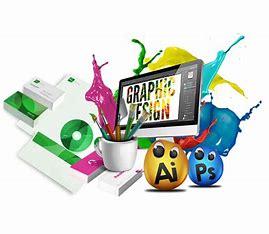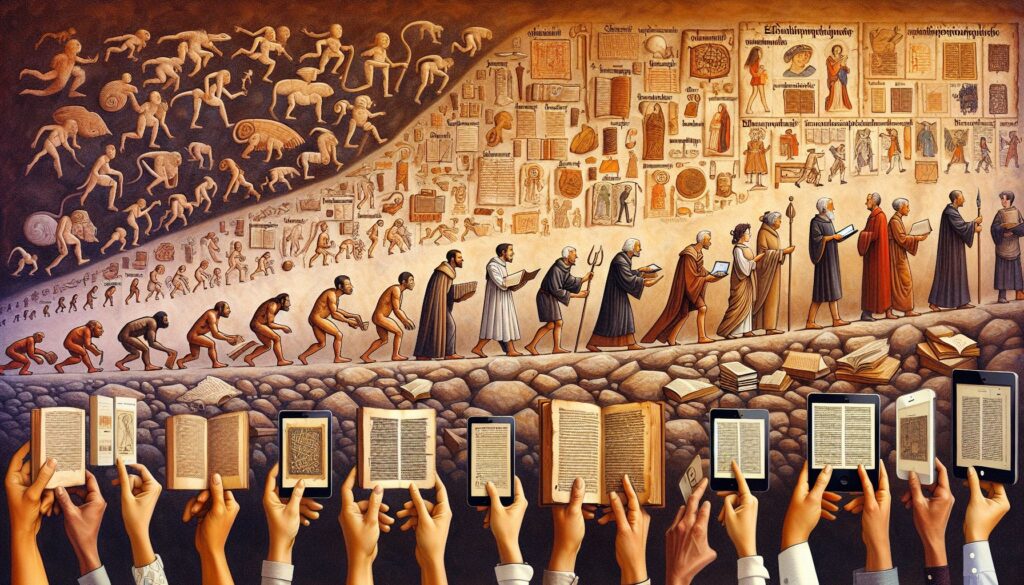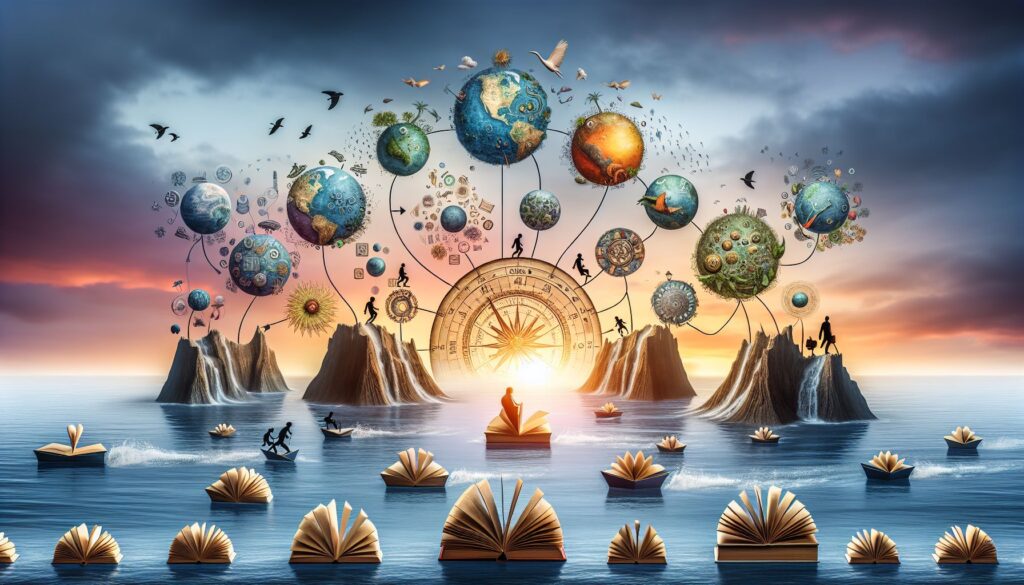Dorothy Parker once quipped, “I don’t care what’s written about me, as long as it isn’t true.” As we venture into the literary landscape’s technological shift, we might find ourselves questioning what’s veritably real and what’s shaped by technology’s deft hands.
 Our story, as readers, began with handwritten manuscripts, progressed to Gutenberg’s printing press, and now floats in the surreal quality of the ebook phenomenon. The million dollar question begs: Is technology the hero ushering literature into a new golden age, or the villain sending tangible books toward an untimely demise?
Our story, as readers, began with handwritten manuscripts, progressed to Gutenberg’s printing press, and now floats in the surreal quality of the ebook phenomenon. The million dollar question begs: Is technology the hero ushering literature into a new golden age, or the villain sending tangible books toward an untimely demise?
Consider e-reading platforms like Kindle and Nook, which have, quite literally, changed the face of reading. This leap from tactile paper to digital screens reflects not just a technological shift but also an ongoing metamorphosis in global reading habits. The convenience of carrying an entire library, albeit virtual, in a compact, light-weight device has a distinct allure even the most ardent bibliophile cannot deny.
Enter audiobooks, and we’re witnessing a further erosion of traditional reading habitats. With digital storytelling welcoming people to consume literature while cooking, commuting, or completing chores, it’s no wonder this format is experiencing a dynamic surge in popularity. Arguably, this is a win for literature, increasing its accessibility and promoting literacy across different demographics.
However, every tale has two sides. With the printed book’s trademark sensory enticements – the evocative smell of paper, the thumb grazing textured pages, the weight of a story held in your hands – noticeably absent in the digital realm, many argue that technology is stripping away reading’s intrinsic charm. There’s a palpable sense of nostalgia about the paperbacks and hardcovers, a romance that appears tricky for technology, with all its pragmatic sleight of hand, to mimic.
Looking ahead, it’s clear that the literary ecosystem’s future will lie in the harmonious convergence of the yesteryears and the futuristic tech. Virtual Reality (VR) is already altering the contours of storytelling with immersive, interactive reading experiences. Imagine reading Tolkien and literally stepping into Middle-Earth, walking alongside hobbits, elves, and dwarves. This might seem far-fetched now, but with advances in VR technology, it’s not wholly inconceivable.
Meanwhile, Augmented Reality (AR) is initiating an era of enhanced books, blurring the boundaries between the physical and virtual worlds. Harry Potter books come alive with AR, where paintings move, spells work, and magical creatures lurk around the corners of your room! The dawn of these augmented books could signify a new reading era, where lovers of traditional books and tech enthusiasts find common ground.
Like every realm touched by technology, the literary world is in an intriguing flux, oscillating between the comfort of tradition and the allure of innovation. Though we can’t definitively categorize technology as the hero or the culprit in this narrative, we can say this – it’s transforming our story, twisting its plot in mesmerizing ways, and compellingly nudging us towards uncharted territories. And as we flip to the next chapter, it’s clear the fate of our story lies not in technology’s hands alone, but in how we storytellers and story-lovers decide to wield it.




